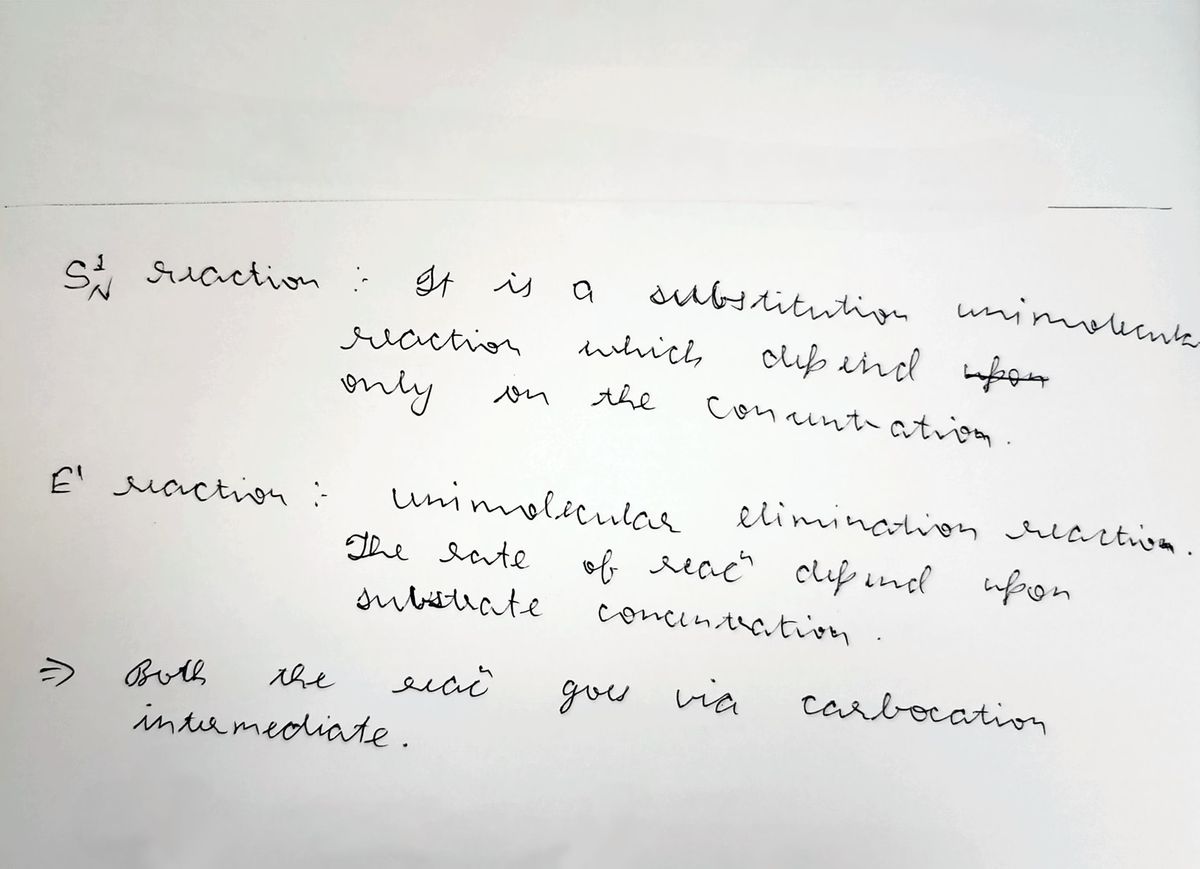As some of you have seen while reading/watching outside sources, most textbooks say that SMI and El occur on 2° carbons (we said they only take place on 3°). Let's explore that concept we didn't learn. Draw the SNI) and El product for the following reaction and assume that it will go through a car bocation intermediate. Using your knowledge about car bocations, draw the product to the SMI and El reactions, and draw the mechanism of each of these reactions, explaining how you got to each of those products H₂0 substitution Products Mechanism for substitution product Mechanism for elimination product Elimination Product
As some of you have seen while reading/watching outside sources, most textbooks say that SMI and El occur on 2° carbons (we said they only take place on 3°). Let's explore that concept we didn't learn. Draw the SNI) and El product for the following reaction and assume that it will go through a car bocation intermediate. Using your knowledge about car bocations, draw the product to the SMI and El reactions, and draw the mechanism of each of these reactions, explaining how you got to each of those products H₂0 substitution Products Mechanism for substitution product Mechanism for elimination product Elimination Product
Chemistry
10th Edition
ISBN:9781305957404
Author:Steven S. Zumdahl, Susan A. Zumdahl, Donald J. DeCoste
Publisher:Steven S. Zumdahl, Susan A. Zumdahl, Donald J. DeCoste
Chapter1: Chemical Foundations
Section: Chapter Questions
Problem 1RQ: Define and explain the differences between the following terms. a. law and theory b. theory and...
Related questions
Question

Transcribed Image Text:As some of you
textbooks
say
most
have seen while reading/ watching outside sources,
that SMI and El occur on 2° carbons (we said they only take
place on 3°). Let's explore that concept we didn't learn. Draw the SNY and
El product for the following reaction and assume that it will go through a
car bocation intermediate. Using your knowledge about car bocations,
draw the product to the SMI and El reactions, and draw the mechanism
of each of these reactions, explaining how you got to each of these products
Lenna
12₂0
substitution
Products
Mechanism for substitution product
Mechanism for elimination product
Elimination
Product
Expert Solution
Step 1

Step by step
Solved in 2 steps with 2 images

Knowledge Booster
Learn more about
Need a deep-dive on the concept behind this application? Look no further. Learn more about this topic, chemistry and related others by exploring similar questions and additional content below.Recommended textbooks for you

Chemistry
Chemistry
ISBN:
9781305957404
Author:
Steven S. Zumdahl, Susan A. Zumdahl, Donald J. DeCoste
Publisher:
Cengage Learning

Chemistry
Chemistry
ISBN:
9781259911156
Author:
Raymond Chang Dr., Jason Overby Professor
Publisher:
McGraw-Hill Education

Principles of Instrumental Analysis
Chemistry
ISBN:
9781305577213
Author:
Douglas A. Skoog, F. James Holler, Stanley R. Crouch
Publisher:
Cengage Learning

Chemistry
Chemistry
ISBN:
9781305957404
Author:
Steven S. Zumdahl, Susan A. Zumdahl, Donald J. DeCoste
Publisher:
Cengage Learning

Chemistry
Chemistry
ISBN:
9781259911156
Author:
Raymond Chang Dr., Jason Overby Professor
Publisher:
McGraw-Hill Education

Principles of Instrumental Analysis
Chemistry
ISBN:
9781305577213
Author:
Douglas A. Skoog, F. James Holler, Stanley R. Crouch
Publisher:
Cengage Learning

Organic Chemistry
Chemistry
ISBN:
9780078021558
Author:
Janice Gorzynski Smith Dr.
Publisher:
McGraw-Hill Education

Chemistry: Principles and Reactions
Chemistry
ISBN:
9781305079373
Author:
William L. Masterton, Cecile N. Hurley
Publisher:
Cengage Learning

Elementary Principles of Chemical Processes, Bind…
Chemistry
ISBN:
9781118431221
Author:
Richard M. Felder, Ronald W. Rousseau, Lisa G. Bullard
Publisher:
WILEY